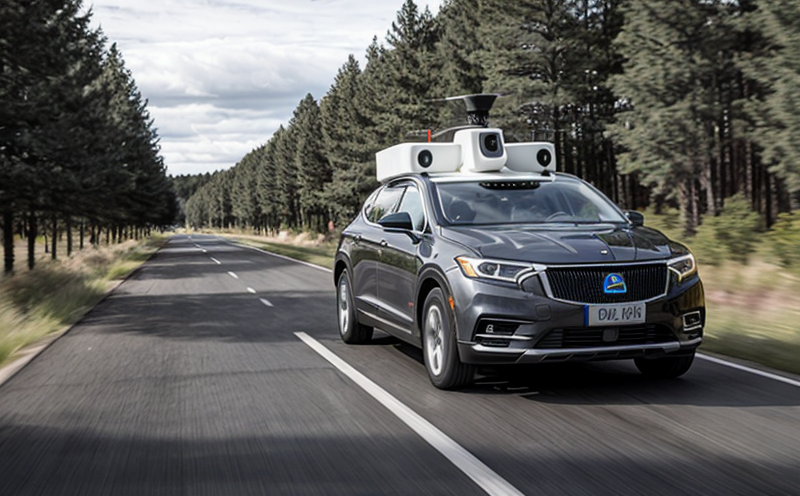ANSI RIA R15.08 Mobile Robot Navigation Safety Requirements
The ANSI/RIA R15.08 standard is a crucial document that provides comprehensive safety requirements for autonomous mobile robots (AMRs) operating in unstructured environments. This standard ensures the safe integration of AMRs into industrial and commercial settings, thereby mitigating potential risks to personnel and property.
Developed by the Robotic Industries Association (RIA), ANSI/RIA R15.08 covers various aspects of mobile robot navigation safety, including sensor requirements, obstacle detection, collision avoidance mechanisms, safe operation zones, and human-robot interaction guidelines. Compliance with this standard is essential for manufacturers and integrators to ensure that their products meet the highest levels of safety and reliability.
The standard applies not only to traditional industrial robots but also to a wide range of mobile robotic systems used in logistics, retail, healthcare, and other industries. By adhering to ANSI/RIA R15.08, manufacturers can demonstrate their commitment to safety and compliance with international standards, which is increasingly important for market access and customer confidence.
One of the key features of ANSI/RIA R15.08 is its emphasis on risk assessment and management throughout the lifecycle of a mobile robot system. This includes initial design considerations, manufacturing processes, installation procedures, operational practices, and decommissioning protocols. By incorporating these safety measures into every stage of development and deployment, manufacturers can significantly reduce the likelihood of incidents involving their products.
A critical component of ANSI/RIA R15.08 is its requirement for robust sensor systems capable of detecting obstacles and other potential hazards in real-time. These sensors must be able to accurately identify objects within a safe distance range while maintaining minimal false alarm rates. Additionally, the standard mandates that robots equipped with such sensors should employ advanced algorithms designed specifically for obstacle avoidance during navigation.
Another important aspect addressed by ANSI/RIA R15.08 is human-robot interaction (HRI). The document outlines specific guidelines aimed at ensuring safe coexistence between humans and mobile robots in shared spaces. These recommendations cover topics such as proper signage, audible alerts, visual cues, physical barriers, and training programs intended to educate both operators and bystanders about appropriate behaviors around automated systems.
To assist laboratories conducting tests according to ANSI/RIA R15.08, we offer a comprehensive suite of services tailored specifically towards this standard. Our experienced team utilizes state-of-the-art equipment and methodologies compliant with global standards to ensure accurate results that can be relied upon by clients worldwide. Whether you need assistance with initial certification or ongoing compliance verification, our experts are here to help every step along the way.
Industry Applications
| Industry | Application Example |
|---|---|
| Logistics & Warehousing | Testing autonomous forklifts and pick-and-place robots used in fulfillment centers. |
| Healthcare | Evaluating patient transport vehicles designed to navigate hospital corridors safely. |
| Retail | Assessing mobile inventory management systems capable of operating within store aisles without causing disruptions. |
| Manufacturing | Vetting collaborative robots (cobots) used in assembly lines alongside human workers. |
International Acceptance and Recognition
- An ISO/IEC standard closely aligned with ANSI/RIA R15.08 is ISO 3691-7, which provides guidelines for the safety of industrial robots.
- The European Normative Standard EN 60204-1:2011 also addresses aspects relevant to mobile robot navigation but focuses more broadly on machinery safety.
Many countries around the world have recognized ANSI/RIA R15.08 as an authoritative reference for ensuring safe autonomous mobile robotics systems. Certification bodies in North America, Europe, Asia-Pacific regions often accept compliance with this standard as part of their assessment processes when validating products intended for commercial sale.
Competitive Advantage and Market Impact
- Clients who achieve ANSI/RIA R15.08 certification gain a competitive edge by demonstrating superior commitment to safety and regulatory compliance.
- This certification can lead to increased trust among end-users, particularly those in high-risk industries like healthcare or aviation where safety is paramount.
By adhering to these stringent requirements, organizations not only protect themselves against liability claims but also enhance their reputation as leaders in responsible innovation. In today’s market, consumers increasingly demand transparency regarding how companies prioritize worker and public safety above profit margins.





